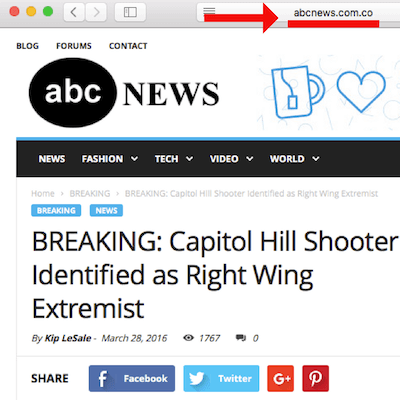Fake News. What’s really B.S. and how do we get rid of it?

- By Kelly Strain
- Technology, CleanSpeak, News, Business, Strategies
- November 16, 2016

If you have been on the internet this week you are aware of the fake news crisis spiralling out of control. But just in case you missed it, recent headlines read something like this: Facebook is being blamed for Trump's election, Google and Facebook Take Aim at Fake News Sites, Facebook’s fake news crisis deepens.
With great power comes great responsibility
Facebook has over 1 billion active users who utilize the platform to post, share and comment on news. When Facebook was accused of influencing the election, Zuckerberg was quick to say that was a “pretty crazy idea.” Is it really that crazy? Facebook has become a catalyst for the spread of fake news given the ease of it’s “share” button. Regardless, fake news isn’t going away anytime soon, it will likely worsen and while Facebook has taken steps to limit the sites' use of their ad networks, there has been no push to eliminate fake news from the News Feed.
This daunting issue is not Facebook’s alone. Any platform that allows user generated content would be wise to get out ahead of this growing problem in order to prevent this spam and protect their brand.
It’s complicated, but not impossible
Google is not new to this fight. They have spent years attempting to minimize the spread of spam/fake links and misleading content. To combat this, Google built an algorithm that prioritizes the quality and relevance of an article.
PR(A) = (1-d) + d (PR(T1)/C(T1) + ... + PR(Tn)/C(Tn))
- PR(A) is the PageRank of page A,
- PR(Ti) is the PageRank of pages Ti which link to page A,
- C(Ti) is the number of outbound links on page Ti and
- d is a damping factor which can be set between 0 and 1
PageRank follows this general rule of thumb: the more links there are directing to a specific page containing the search keyword, the more popular it is. As pages get more popular the weight of their votes increase proportionally and the resulting score increases.
People can still write anything (fake or not), but not just any piece of content will show up in the first few pages of a Google search result. As a result of this vetting process people still trust the quality and validity of articles on Google searches. Facebook would be wise to follow Google’s lead.
Authority matters
Google’s algorithm for determining quality rests on attention, if people are linking to a site or visiting that site, it is considered more worthwhile than a site with fewer inbound links and fewer visits (assuming all other things are equal). Google then uses that relative worth, or authority, to value outbound links. The more authoritative a site is that links to an article the more value Google gives that link.
Attention = value = authority.
For fake news it is much more difficult. Attention doesn’t necessarily = truth or authority. Facebook has proven that many times over. So, what does?
It is important to not only assess the quality of the shared content, but the authority of the people who share it. A authoritative user could flag an article as fake, and if a threshold was crossed the article could be marked as untrusted. The problem is: how does a user become authoritative? And, what safeguards prevent an authoritative user from misusing their power?
Authority is a problem we have had to tackle for our CleanSpeak clients that utilize comment/article/user reporting. A user may report a comment or article, not because it’s fake, spam or hateful, but because they don’t agree with it. CleanSpeak applies a model to every user’s behavior, which yields an authority value. Reports on messages or users are taken in aggregate and weighted based on those authorities.
While newly available extensions can create alerts based off of a manual list of False, Misleading, Clickbait-y, and/or Satirical “News” Sources, this might not catch everything. It’s a great start, but authoritative users should have the ability tag and flag sources, too (as the number of these fake news sites is bound to outgrow the list.)